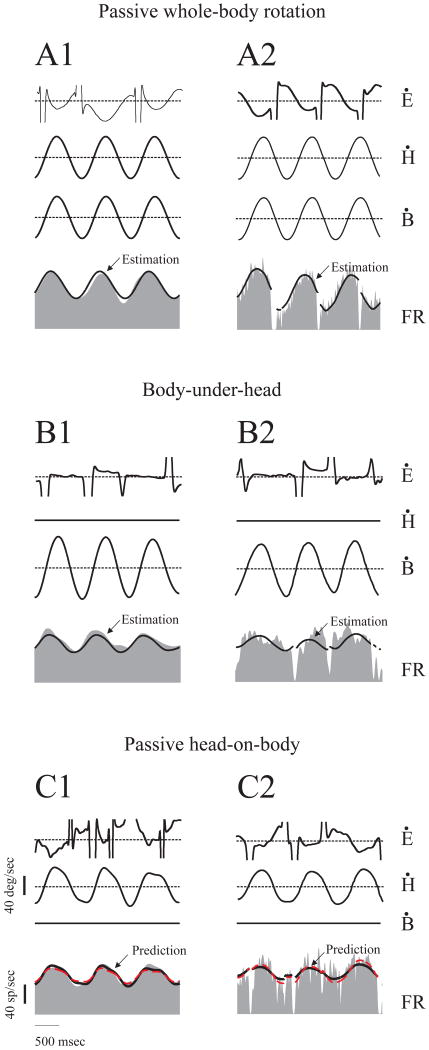Figure 1.
Activity of an example VO and PVP neuron. (A) Responses to vestibular stimulation during passive whole-body rotation. Both neurons increased their discharges during ipsilaterally directed head movements. The VO neuron (A1) was insensitive to eye movements (not shown), whereas the PVP neuron (A2) increased its discharge for contralaterally directed eye movements (not shown) and paused for ipsilaterally directed saccades. Vestibular sensitivities were estimated using equations 1 and 2 for VO and PVP cells, respectively (solid black traces superimposed on neuronal responses). (B) Responses to neck proprioceptive stimulation during body-under-head rotations. The example VO (B1) and PVP (B2) neurons both responded to ipsilaterally directed rotations of body under a fixed head. Neuronal sensitivities to neck movement were estimated using equation 3 (superimposed solid black traces). (C) Responses to concurrent vestibular and neck proprioceptive stimulation during passive head-on-body rotation. The example VO (C1) and PVP (C2) neurons were excited by ipsilaterally directed rotations. Addition of the vestibular and neck sensitivities (see text, equation 4) accurately predicted (dashed red line) the firing rate and was similar to the estimated response (solid black line). Ė, eye velocity; Ḣ, head velocity; Ḃ, body velocity; FR, firing rate.

